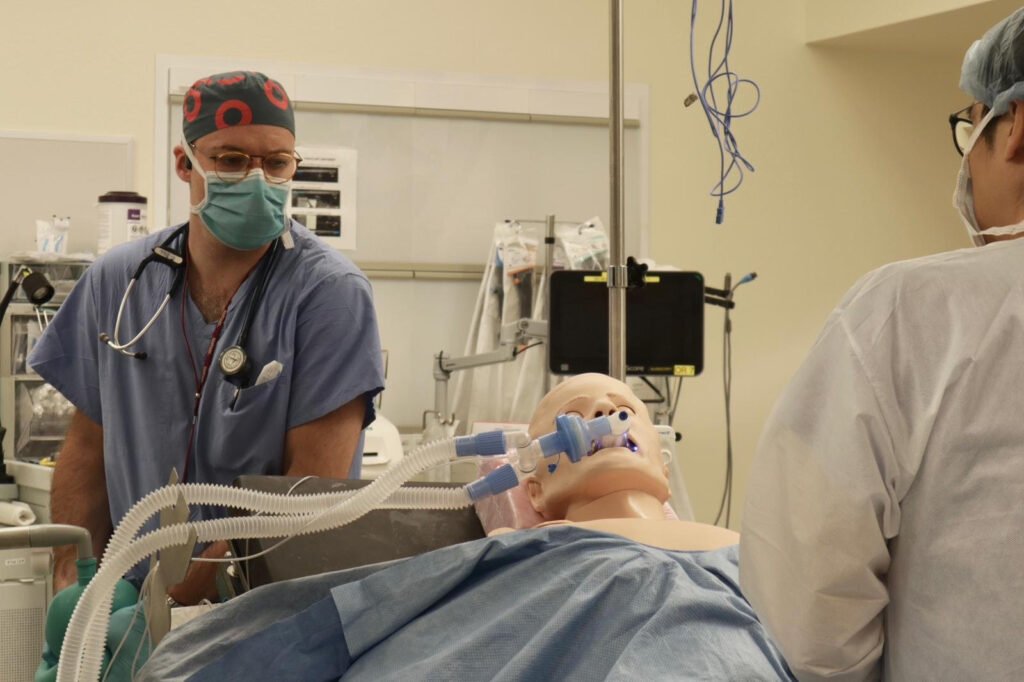Routine In Situ Simulation
Nadav Levy, MD, Lior Levy, MD, Dario Winterton, MD, Adil Al-Karim Manji, MD, Peva Gbagornah, MD, Huma Hussain, MD
Published December 2, 2024 | Clinics in Medical Education
Issue 4 | Volume 1 | November 2024
We are excited to provide an update on our simulation training program, which continues to enhance the educational experience for our residents. Our regular in-situ simulation sessions remain a corner- stone of this initiative, covering major intraoperative emergencies such as cardiac arrest, anaphylaxis, airway crises and non operative room anesthesia (NORA). These immersive experiences allow res- idents to practice critical decision-making, communication, and teamwork skills in a safe and controlled environment. By simulating high-stakes scenarios, we aim to instill confidence and competence in our residents, preparing them for real-life challenges in the operating room.
Alongside our educational efforts, we are leveraging this initiative to research and refine our teaching methods. We are actively collecting surveys and feedback from residents to assess their self percieved clinical knowledge and competence, confidence, and crisis management skills. In addition, we will as- sess the effectiveness of our simulation sessions and identify areas for improvement. This data-driven approach will not only enhance our training methodologies but also contribute to the broader field ofmedical education through research dissemination. We are deeply grateful to our residents and fac- ulty for their cooperation and commitment to this program, as their insights and participation are vital to our success. By analyzing the outcomes and experiences from our simulation program, we aim to develop best practices that can be shared with other institutions, fostering a culture of con- tinuous improvement in medical training and ultimately benefiting patient care.
Simulation Case!
Click here to view a sample simulation case.


